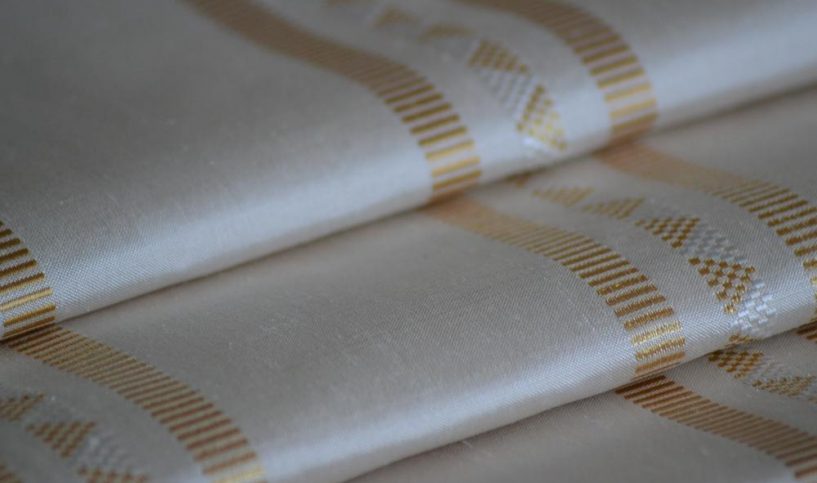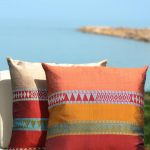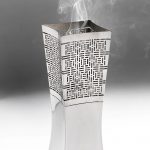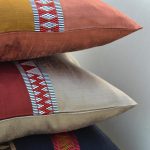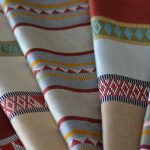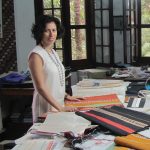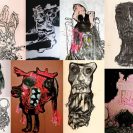To this day, Laila Al-Hamad is still amazed by how her desire to recover and modernize the traditional crafts of the Gulf region, such as Bedouin Sadu weaving and woodwork carvings, has taken her on an astounding journey to distant locations across the globe. One would naturally imagine that the great craft of Sadu weaving is a prized heritage that our region naturally excels at, yet Al-Hamad comments, “With only 7 master weavers in Kuwait, expert weavers who can execute the most complicated Sadu designs, it is obvious that this art is lost to new generations.”
The founder of design brand Zeri Crafts, Al-Hamad wishes to revive and modernize the iconic symbols and traditional crafts of the Gulf region by enhancing the quality of craftsmanship involved, as well as the materials employed. Zeri, the traditional form of embroidery using gold thread, is a central feature in traditional regional attire, also inspiring Al-Hamad to consider the cultural symbols that define our region. From her recent experience in social and cultural development with her previous job with the World Bank, she traveled to developing regions of the world where crafts formed a viable economic aspect of the society. She adds, “I was especially impressed with the artisans in East Asia and I learned to appreciate that, and it would be nice to revive and modernize the traditions of crafts in the Gulf region as a source of identity. We really need these ties to our culture. It would be interesting to create an organization focused on uplifting the art of crafts in the GCC.”
Instead of working with artisans from the region, who were in essence a diminishing breed, Al-Hamad decided to involve talented designers and artisans from different parts of the world. Taking a typical Gulf icon, like the mabkhara, or the traditional vehicle for burning incense, she comments, “The mabkhara is something we all love, we grew up with it and we love the smell, yet I cannot go anywhere and find one that is of high quality and appeal. That’s when I met Nada El Asmar, a talented Palestinian-Belgian designer, who redesigned this icon. She expertly beautified something so traditional, uplifting its standard. After that, I focused my energy on modernizing the Sadu.”
Al-Hamad describes her journey with the Sadu as rather serendipitous, after her effort to find local weavers didn’t pan out the way she planned, she met with textile expert Keireine Canavan, and created a final year design competition for students at the University of Wales Institute of Cardiff. Their goal? Turning the traditional Sadu symbols into textiles that were wearable, light and airy. She adds, “I wanted to lighten the Sadu to bring it back into our homes, and wished to focus on recreating the design on silk.”
After selecting her winning designer, Al-Hamad then went on to consider the implementation of these remarkable designs. Interestingly so, she was back to where she was initially impressed with the talent pool of local artisans, Eastern Asia. “In Laos, weaving is a thriving business and an art form that is passed on through generations. Oddly enough, I was back where I started.” Currently working with a specialized team of weavers, she is happy to report that three of the women at the studio have now learned how to recreate the Sadu pattern, all done by hand, with silk textiles.
In doing so, Al-Hamad discovered a cross-cultural exchange of expertise, technique and craft. “I’m hoping to work with artisans from different parts of the world, any beautiful work that is executed by the hands of a skilled artisan deserves my utmost recognition.”
Zeri Crafts showcases its debut collection at the Sadu House in Kuwait on May 7th. For more information visit zericrafts.com or email info@zericrafts.com.



